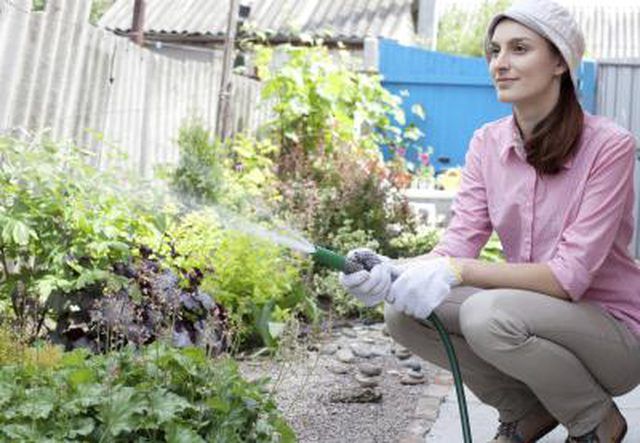Bulbs
Flower Basics
Flower Beds & Specialty Gardens
Flower Garden
Garden Furniture
Garden Gnomes
Garden Seeds
Garden Sheds
Garden Statues
Garden Tools & Supplies
Gardening Basics
Green & Organic
Groundcovers & Vines
Growing Annuals
Growing Basil
Growing Beans
Growing Berries
Growing Blueberries
Growing Cactus
Growing Corn
Growing Cotton
Growing Edibles
Growing Flowers
Growing Garlic
Growing Grapes
Growing Grass
Growing Herbs
Growing Jasmine
Growing Mint
Growing Mushrooms
Orchids
Growing Peanuts
Growing Perennials
Growing Plants
Growing Rosemary
Growing Roses
Growing Strawberries
Growing Sunflowers
Growing Thyme
Growing Tomatoes
Growing Tulips
Growing Vegetables
Herb Basics
Herb Garden
Indoor Growing
Landscaping Basics
Landscaping Patios
Landscaping Plants
Landscaping Shrubs
Landscaping Trees
Landscaping Walks & Pathways
Lawn Basics
Lawn Maintenance
Lawn Mowers
Lawn Ornaments
Lawn Planting
Lawn Tools
Outdoor Growing
Overall Landscape Planning
Pests, Weeds & Problems
Plant Basics
Rock Garden
Rose Garden
Shrubs
Soil
Specialty Gardens
Trees
Vegetable Garden
Yard Maintenance
How to Treat a Black Spot on Hydrangeas
How to Treat a Black Spot on Hydrangeas. Having black spots pop up on your prized plants is alarming, especially when those plants are garden centerpieces such as hydrangeas (Hydrangea spp.). Suitable for U.S. Department of Agriculture plant hardiness zones 3 though 9, depending on variety, the summer-spectacular shrubs with the head-turning,...

Having black spots pop up on your prized plants is alarming, especially when those plants are garden centerpieces such as hydrangeas (Hydrangea spp.). Suitable for U.S. Department of Agriculture plant hardiness zones 3 though 9, depending on variety, the summer-spectacular shrubs with the head-turning, spherical or lacecap blooms sometimes attract leaf-spotting fungi. Restoring their foliage is a matter of identifying the responsible pathogen and choosing the most effective treatment.
Cercospora Leaf Spot
Although Cercospora leaf spot fungus (Cercospora hydrangeae) strikes in spring, its spots typically surface after hydrangeas have passed their peak of summer bloom. As they move from the older inner leaves to the new outer ones, the small, round blackish-purple spots grow and their centers fade to gray or tan. Severely infected leaves often fade to yellowish-green and drop from the plant. Affected hydrangeas seldom die, but they may weaken from defoliation.
Cultural Prevention
Spring pruning to thin your hydrangeas allows more air to reach their interiors, dry the leaves and discourage moisture- and humidity-loving Cercospora. Remove up to one-third of the large older stems with clean, sharp pruning shears disinfected between cuts in a solution of 1 part household bleach to 9 parts water. When you're done, spread a 2-inch layer of organic mulch such as ground bark around the plants. This stops Cercospora spores that overwintered in the soil from splashing onto the plants. Minimize the chances of future infestations by raking up infected foliage as soon as it falls and disposing of it in sealed plastic bags.
Non-toxic Fungicide
Enhance your cultural prevention measures with preventive fungicide. Gardening writer and consultant George Weigel recommends combining 1 tablespoon each of horticultural oil and baking soda in 1 gallon of water. Spray your shrubs' newly emerging leaves when wet or humid conditions favor a Cercospora attack. Coat them thoroughly, repeating the treatment after rain or every 10 days to two weeks as conditions warrant. Make a habit of watering your hydrangeas from beneath, so you donít wash off the solution. Fungicides like chlorothalonil, myclobutanil or thiophanatemethyl work best when applied before or immediately after symptoms occur, but their use is "often not warranted" by homeowners, says the University of Arkansas, since symptoms usually show up so late in the season. If you do opt for products containing these fungicides, be sure to follow label directions and wear protective clothing including eye goggles.
Sooty Mold
If a clear, gooey substance accompanied by greasy black fungal spots covers your hydrangea's leaves, the plants are infested with sooty mold. This fungus feeds on the waste of sap-eating aphids, whiteflies and cottony hydrangea scales gathered on the backs of the foliage. The aphids are usually green, the whiteflies swarm from the plants if disturbed and the scales resemble tufts of cotton wool. Sooty mold doesn't damage the leaves, but it may interfere with photosynthesis.
Eliminating Sooty Mold
Sooty mold persists as long as your hydrangeas host the waste-producing insects. To manage a minor problem, prune the affected branches or try hosing the pests off with a strong blast of water. Heavier infestations call for spraying with ready-to-use, non-toxic insecticidal soap. It suffocates whatever insects it reaches, so thorough coverage is critical. Spray on a cloudy day, covering the shrubs until they drip. Repeat weekly, or at the brand's specified frequency, until the bugs are gone. Without them to sustain it, sooty mold slowly weathers away. Follow the label's instructions and wear protective clothing, goggles and waterproof gloves when handing the soap.